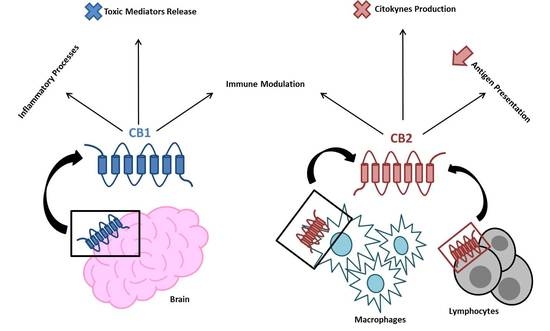 “Obesity rates are increasing worldwide and there is a need for novel therapeutic treatment options.
“Obesity rates are increasing worldwide and there is a need for novel therapeutic treatment options.
The endocannabinoid system has been linked to homeostatic processes, including metabolism, food intake, and the regulation of body weight.
Rimonabant, an inverse agonist for the cannabinoid CB1 receptor, was effective at producing weight loss in obese subjects. However, due to adverse psychiatric side effects, rimonabant was removed from the market.
More recently, we reported an inverse relationship between cannabis use and BMI, which has now been duplicated by several groups.
As those results may appear contradictory, we review here preclinical and clinical studies that have studied the impact on body weight of various cannabinoid CB1 drugs. Notably, we will review the impact of CB1 inverse agonists, agonists, partial agonists, and neutral antagonists.
Those findings clearly point out the cannabinoid CB1 as a potential effective target for the treatment of obesity. Recent preclinical studies suggest that ligands targeting the CB1 may retain the therapeutic potential of rimonabant without the negative side effect profile. Such approaches should be tested in clinical trials for validation.”

 “Literature on the association between cannabis use and body mass index (BMI) among adults suggests that greater cannabis use is associated with a lower BMI. However, results are mixed among adolescents, with both cross-sectional and longitudinal studies finding positive, negative, and nonsignificant associations between cannabis use and BMI.
“Literature on the association between cannabis use and body mass index (BMI) among adults suggests that greater cannabis use is associated with a lower BMI. However, results are mixed among adolescents, with both cross-sectional and longitudinal studies finding positive, negative, and nonsignificant associations between cannabis use and BMI. “The synthetic atypical cannabinoid Abn-CBD, a
“The synthetic atypical cannabinoid Abn-CBD, a  “The cellular microenvironment plays a critical role in the maintenance of bone marrow-derived mesenchymal stem cells (BM-MSCs) and their subsequent cell lineage differentiation. Recent studies suggested that individuals with adipocyte-related metabolic disorders have altered function and adipogenic potential of adipose stem cell subpopulations, primarily BM-MSCs, increasing the risk of heart attack, stroke or diabetes.
“The cellular microenvironment plays a critical role in the maintenance of bone marrow-derived mesenchymal stem cells (BM-MSCs) and their subsequent cell lineage differentiation. Recent studies suggested that individuals with adipocyte-related metabolic disorders have altered function and adipogenic potential of adipose stem cell subpopulations, primarily BM-MSCs, increasing the risk of heart attack, stroke or diabetes.
 “Endocannabinoid system consists of
“Endocannabinoid system consists of 



 “Obesity, an important risk factor for developing chronic kidney disease (CKD), affects the kidneys by two main molecular signaling pathways: the endocannabinoid/CB1 R system, whose activation in obesity promotes renal inflammation, fibrosis, and injury; and the inducible nitric oxide synthase (iNOS), which generates reactive oxygen species resulting in oxidative stress. Hence, a combined peripheral inhibitory molecule that targets both CB1 R and iNOS may serve as an efficacious therapeutic agent against obesity-induced CKD.
“Obesity, an important risk factor for developing chronic kidney disease (CKD), affects the kidneys by two main molecular signaling pathways: the endocannabinoid/CB1 R system, whose activation in obesity promotes renal inflammation, fibrosis, and injury; and the inducible nitric oxide synthase (iNOS), which generates reactive oxygen species resulting in oxidative stress. Hence, a combined peripheral inhibitory molecule that targets both CB1 R and iNOS may serve as an efficacious therapeutic agent against obesity-induced CKD.